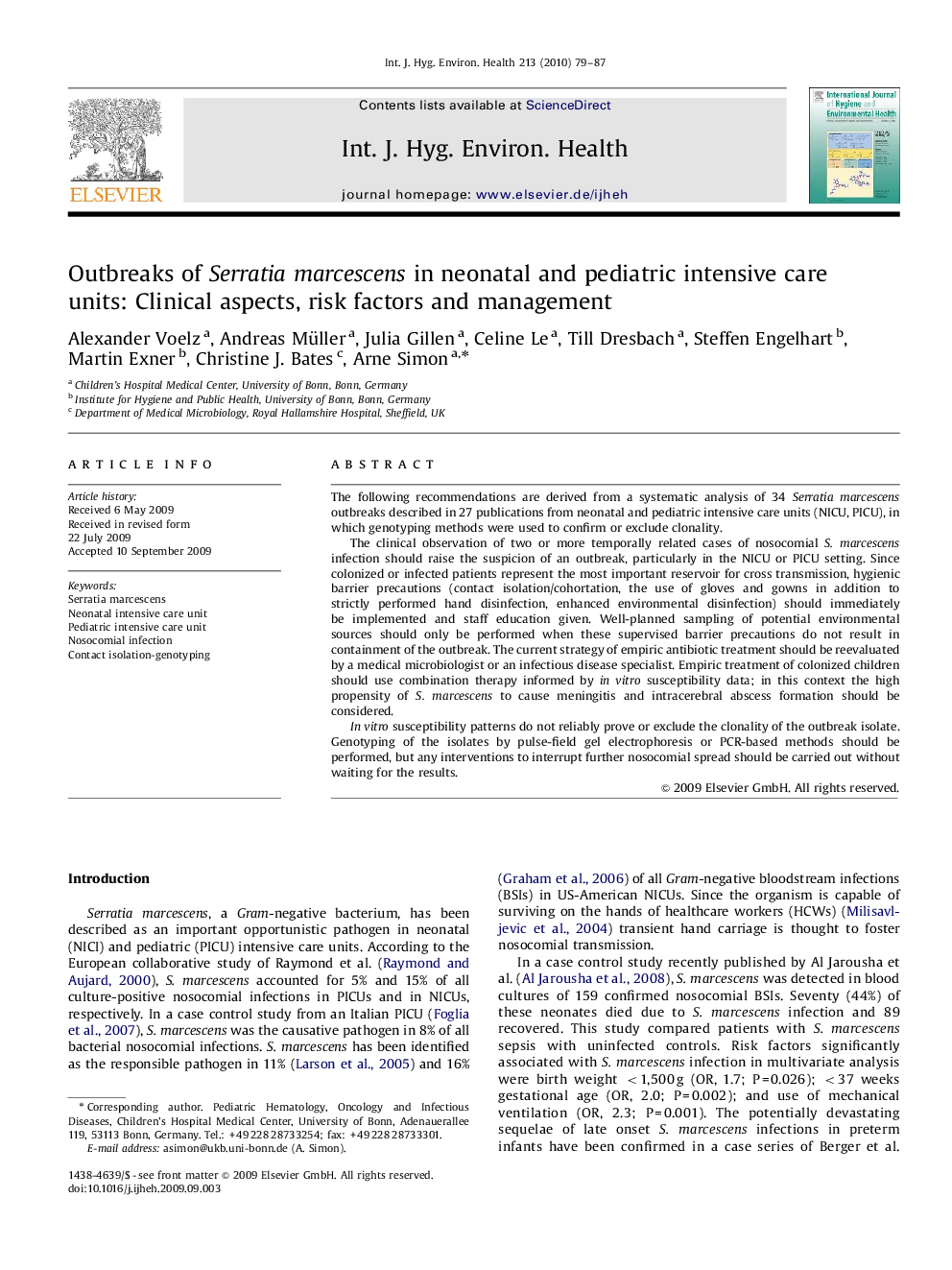| کد مقاله | کد نشریه | سال انتشار | مقاله انگلیسی | نسخه تمام متن |
|---|---|---|---|---|
| 2589083 | 1561922 | 2010 | 9 صفحه PDF | دانلود رایگان |

The following recommendations are derived from a systematic analysis of 34 Serratia marcescens outbreaks described in 27 publications from neonatal and pediatric intensive care units (NICU, PICU), in which genotyping methods were used to confirm or exclude clonality.The clinical observation of two or more temporally related cases of nosocomial S. marcescens infection should raise the suspicion of an outbreak, particularly in the NICU or PICU setting. Since colonized or infected patients represent the most important reservoir for cross transmission, hygienic barrier precautions (contact isolation/cohortation, the use of gloves and gowns in addition to strictly performed hand disinfection, enhanced environmental disinfection) should immediately be implemented and staff education given. Well-planned sampling of potential environmental sources should only be performed when these supervised barrier precautions do not result in containment of the outbreak. The current strategy of empiric antibiotic treatment should be reevaluated by a medical microbiologist or an infectious disease specialist. Empiric treatment of colonized children should use combination therapy informed by in vitro susceptibility data; in this context the high propensity of S. marcescens to cause meningitis and intracerebral abscess formation should be considered.In vitro susceptibility patterns do not reliably prove or exclude the clonality of the outbreak isolate. Genotyping of the isolates by pulse-field gel electrophoresis or PCR-based methods should be performed, but any interventions to interrupt further nosocomial spread should be carried out without waiting for the results.
Journal: International Journal of Hygiene and Environmental Health - Volume 213, Issue 2, March 2010, Pages 79–87